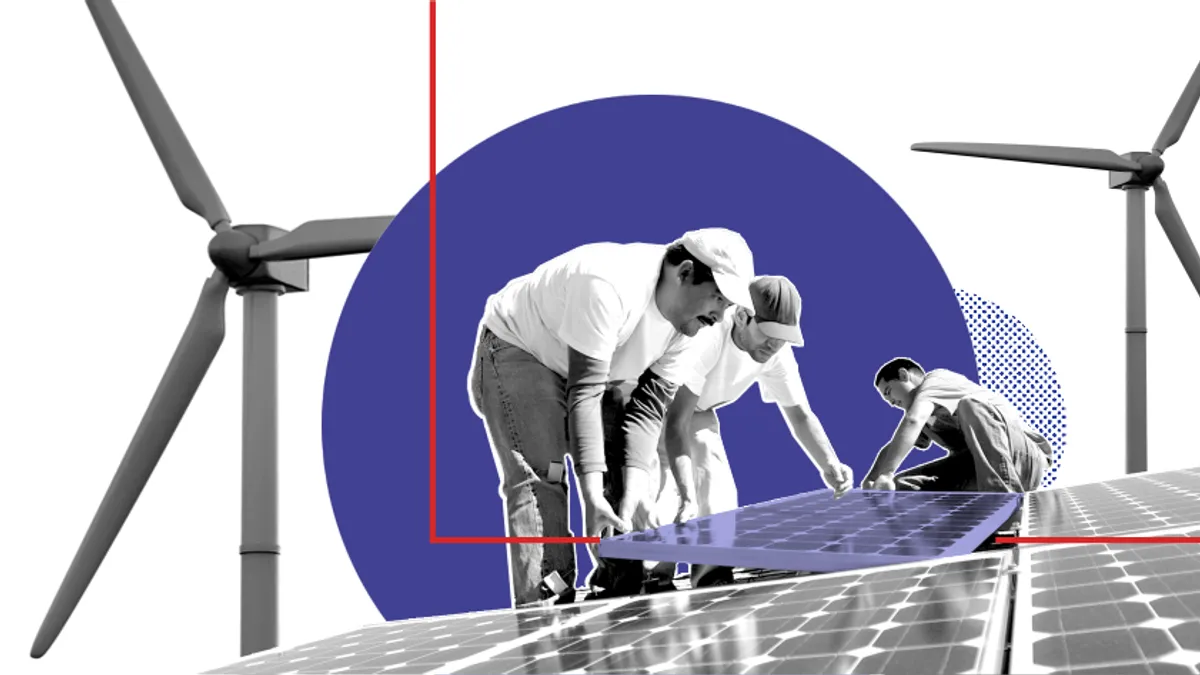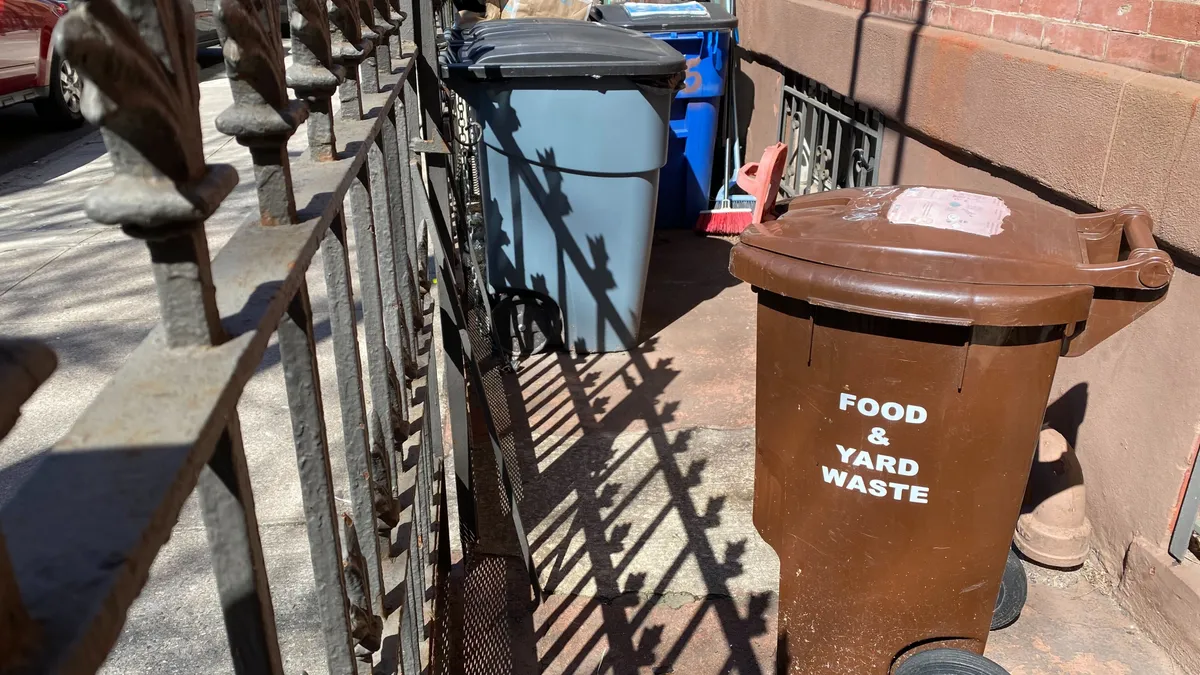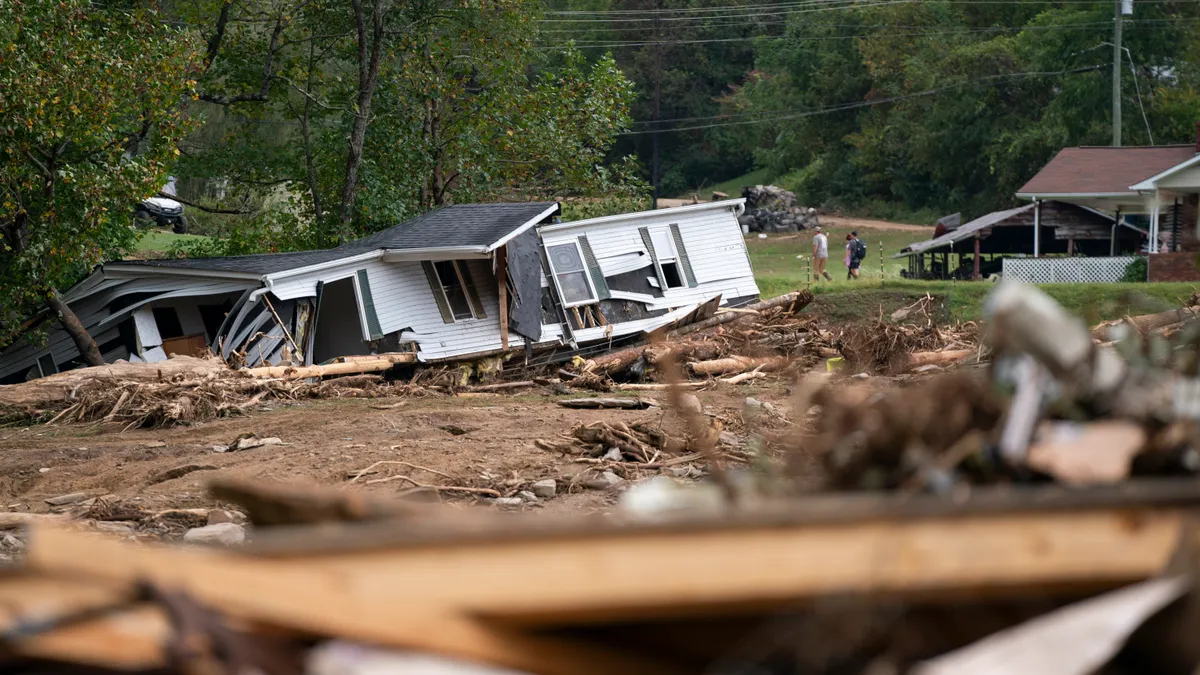Before the COVID-19 crisis, cities spent years — particularly in the last decade — working to curb the effects of climate change on resident well-being and long-term resiliency.
In what some may see as a strange twist of fate, the novel coronavirus has presented an opportunity for city leaders to gain a fresh understanding of climate change trends and effective mitigation policies. Many transit advocates have spent this time reflecting on the need for greener infrastructure, while resiliency experts have urged cities to think more broadly about how to strengthen communities for the next disaster.
Yet not all takeaways have been positive: Experts have also warned of the potentially devsastating impacts cities could face post-coronavirus, if climate challenges are not prioritized amid recovery.
"COVID-19 shows the vulnerability of society at its best," Henk Ovink, the Netherlands' Special Envoy for International Water Affairs, said during a webinar hosted by the World Resources Institute (WRI) in late April. "It's like with climate change, these disasters are magnifying glasses. They really unravel how vulnerability works."
Greening our infrastructure
Stay-at-home orders and social distancing directives have spurred a dramatic reduction of greenhouse gas (GHG) emissions in some cities. Global energy demand is expected to drop significantly as fewer drivers hit the road and factories stand idle, but that demand could rebound in a recovery.
The International Energy Agency (IEA) said the world could see as much as an 8% emissions reduction this year because of the coronavirus — but that temporary drop will not be enough to reverse damage already done to the climate. It would need to be repeated every year moving forward to limit temperature rises to 1.5 degrees Celsius.
With that in mind, there are already calls for Congress to include more investment in green infrastructure in future stimulus pacakges.
In January, House Democrats unveiled a $760 billion infrastructure blueprint that placed a big emphasis on rebuilding existing infrastructure in a greener way. The framework called for an additional $34.3 billion in funding for alternative energy sources, electric grid modernization and supporting the development of a nationwide electric vehicle (EV) charging network. On an April conference call reupping the plan, Rep. Peter DeFazio, D-OR, who chairs the House Transportation and Infrastructure Committee, called the investments a "no-brainer."
"If we've got to rebuild our infrastructure, let's rebuild it in a way that's resilient, for severe climate events," DeFazio said. "Let's rebuild it with new materials that are less carbon intensive. Let's rebuild it in a way so that we move away from fossil fuel dependence in transportation."
With the transportation sector being a leading emitter of GHG, plenty of groups are recommending that it be decarbonized. In its recent "Get America Moving Again" report, Securing America's Future Energy (SAFE) urged incentive programs for EV purchases and an expansion of the Low- or Zero-Emission Vehicle Grant Program, among other recommendations.
The ROI of green infrastructure
Advocates have also talked up the economic benefits of investing in green infrastructure. During an early April webinar, Helen Mountford, WRI's vice president for climate and economics, noted the world spent $400 billion of stimulus funding on green infrastructure after the 2008 financial crisis, leading to a subsequent growth in GDP. South Korea led the way by investing 80% of its stimulus money in green initiatives.
"We know and understand much better the risks of coming out of this COVID-19 crisis, and we need to ensure we build resilience for the future, including climate-wise," she said.
And as nationwide unemployment levels climb, cities have used decarbonization initiatives in an effort to create jobs while cutting GHG emissions. Experts suggested efforts like climate-focused building retrofits, similar to those done in New York City following the passage of the Climate Mobilization Act, could boost employment while addressing decarbonization.
"We're going to need to deal with employment," Jacqueline Klopp, co-director of the Center for Sustainable Urban Development at Columbia University, told Smart Cities Dive. "But already there's so many different ways that people could be deployed in moving us towards a better future, and there are tons of jobs with green retrofitting."
Partnerships around grid modernization and expanding the use of renewables could be helpful, too. Chicago-area utility ComEd, for instance, installed a microgrid in the Bronzeville community under a grant from the U.S. Department of Energy (DOE), and built an EV pilot program after learning of local residents' concerns about transportation access.
The company's engineers and scientists studied the pilot's impact on the microgrid, allowing the community to move toward decarbonization goals while giving ComEd employees continued work.
"[Climate change] is a health issue for them, it's a societal issue for them, it's about safety," Michelle Blaise, member of the IEEE Power & Energy Society (PES) Industry Advisory Board and senior vice president for technical services at ComEd, said in an interview with Smart Cities Dive. "When we bring those aspects into the work that we do and we collaborate together, we are really doing some really exciting things and experimenting, and both of us are learning with some of the pilots we've developed with the community that we work in."
Making resilient investments
Investing in infrastructure to withstand the worst impacts of climate change will mean also investing in resiliency, an effort that has already garnered a great deal of support.
During the WRI webinar in early April, Dan Lashof, director of the group’s United States operation, said initiatives like retrofitting buildings, constructing more electric buses and planting trees to capture emissions are a start on the path toward resiliency in the face of climate change.
"By making a major investment now in programs that simultaneously create jobs and build sustainable infrastructure, the seedlings of a solution to the climate crisis can grow out of our current crisis," Lashof said.
International organizations are already thinking about how to influence these investments. In late April, C40 Cities formed its Global Mayors COVID-19 Recovery Task Force with resiliency at the heart of every policy area.
"The seedlings of a solution to the climate crisis can grow out of our current crisis."

Dan Lashof
Director, USA, World Resources Institute
"[We] need more than ever to position our economic recovery in the context of our fight against climate change," Montreal Mayor Valerie Plante said in a statement at the time of the task force's creation. "It is also clear to me that our economic recovery must go hand in hand with our social recovery."
Michael Berkowitz, founding principal of Resilient Cities Catalyst (RCC), said embedding resiliency into investments and policies must continue, even beyond the pandemic.
"When you have interventions that only work in silos ... we never get the most value out of that," Berkowitz told Smart Cities Dive in a recent interview. "And almost always we don't make ourselves stronger and more resilient, we make ourselves more fragile and more brittle, because these things have been done in silos."
That may be easier said than done, however, due to the growth in unemployment in the clean energy sector. According to an analysis of unemployment data from BW Research Partnership and E2, unemployment across the clean energy workforce has reached 17.8%. The researchers predict up to 850,000 clean energy workers will file for unemployment by the end of June if nothing is done to support the industry further.
Resiliency goes beyond climate
While resiliency often goes hand-in-hand with climate efforts, they are not inherently linked. Berkowitz and others said that for a community to be truly resilient, it must invest in a multitude of areas that help its residents and infrastructure prepare for crises.
A report from ABI Research in late March found cities were "woefully unprepared" to respond to the coronavirus, noting they should lose their "naive 'nothing can happen to us' beliefs and adopt responsible attitudes toward resilience." In an April webinar, Miami Beach, FL Mayor Dan Gelber said while it is difficult to prepare for an invisible threat, leaders must learn for the next crisis.
"Almost always, it's not the wealthy that will suffer the most, if it's like any other disaster or crisis that we've seen, it will be the most poor and vulnerable."

Michael Berkowitz
Founding principal, Resilient Cities Catalyst
RCC recently released a roadmap for economic resilience, calling on cities to address resiliency issues beyond preparing for climate change. The group said a truly resilient city has stable household wealth, a strong small business community and strong social bonds, and leaders must work harder to encourage those factors.
"Almost always, it's not the wealthy that will suffer the most, if it's like any other disaster or crisis that we've seen, it will be the most poor and vulnerable," Berkowitz said. "Then it will be up to what kind of institutions and structures and social capital do we have in our communities that could help people weather that."
Cities that pursue green measures while also thinking about the rest of their economy will be the ones that are best positioned in the next disaster, Berkowitz said.
"It's those communities that will do better when this is all said and done. That will help just as much during the next flood or the next drought or the next water shortage or the next wildfire, as it will in coronavirus," he said.




















